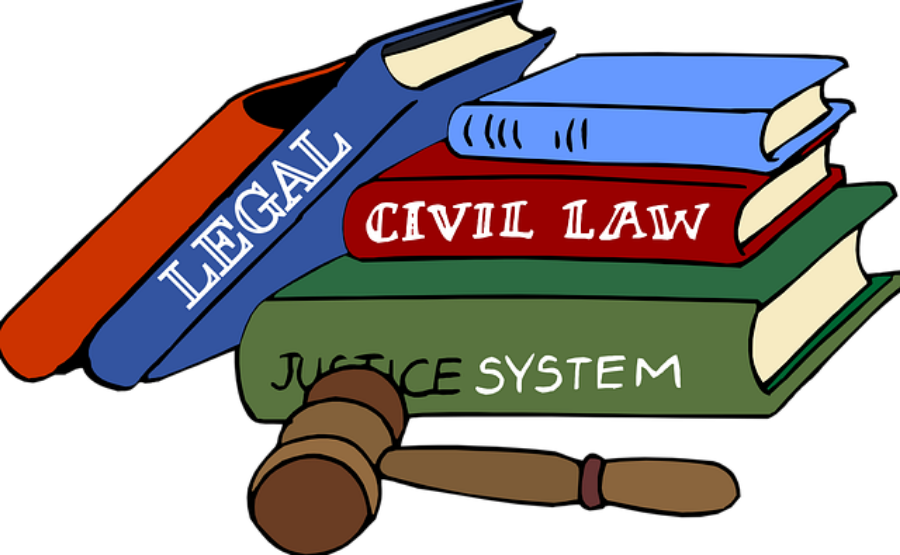Our customer support team regularly fields questions from our customers about legal matters. While we do backgrounds as legal assistants, we're not lawyers and cannot practice law or give legal advice. But on an almost daily basis, customers ask us for answers or opinions which may or may not fall under the definition of legal advice. So what can we do? And how do we know whether it is or it isn't?
Blog
No matter whether you have brick and mortar locations or whether you are strictly an online merchant, your business depends on its Internet profile to generate leads and sales. Product and site reviews and social media comments are critical to your success. With that in mind, you'll need to become acutely aware of what people are saying about you online. While you can't control what is said, you can take action to mitigate damages caused by bad reviews or comments, managing your reputation in the process.
A deed of trust might make it easier for you to get a loan to purchase your new home than trying to get a traditional mortgage from a bank. That's because you're basically giving over the deed to the property to the lender as security for the loan. But not all states allow the use of deeds of trust.
A parental consent letter, stating that the adult in charge has the parent's or guardian's permission to travel with the child and authorizing him/her to make decisions on behalf of that child, is now essential - especially if traveling out of the child's country of residence. It should be signed by every person who has custodial rights over the child.
It's a nightmare to think about - a roofing contractor working on your house slips and falls off your roof, resulting in serious injuries. You have many sleepless nights wondering if he's going to sue you. What can you do to protect against such risks?
Let's say you're brokering a deal between a client who wants to sell a business and potential buyers who are interested in acquiring just such a business. You arrange for your client to meet several of these buyers to discuss whether a deal is do-able. Later, your client tells you that none of them are really serious and he'd like some time to consider his options.
A couple of months go by, and you find out that he completed the sale of the business to one of the buyers you introduced him to. Not only is it infuriating and unfair to lose your commission in this way, it's unnecessary.
Every broker or agent who acts in an intermediary role in a transaction should have their clients sign a non-circumvention agreement to prevent just such an end run from occurring. There are many scenarios in which a non-circumvention agreement should be considered, for instance:
A party that owns certain technology agrees with another party to negotiate with interested third parties to develop and manufacture the technology. Party 1 agrees not to by-pass Party 2 and go directly to the manufacturers.
A venture capital lender agrees to provide a client seeking financing with leads to potential investors drawn from its network of established connections. In return, the client agrees not to consummate any transaction without compensating the lender.
A company hires independent sales agents to generate leads. Both parties mutually agree not to enter into any transaction with the other party's business contacts.
A non-circumvention agreement is typically conjoined with a confidentiality or non-disclosure agreement (NDA). This enables the parties to protect not only their business leads and contacts that they have worked so hard to establish, but all of the confidential information that they have exchanged with each other. Every NDA should include a non-circumvention clause to prohibit the person receiving the confidential information from circumventing the owner of that information by directly contacting its customers, employees and business contacts.
Image by Keith Johnston from Pixabay
In occupational health and safety lingo, the terms "accident" and "incident" may appear to be interchangeable - but they're not. An incident is any situation that unexpectedly arises in the workplace which has the potential to cause injury, damage or harm. An accident is actually an incident that resulted in someone being injured or damage being done to property.
Samuel Goldwyn once said, "An oral contract isn't worth the paper it's written on." Sam had a point - it's often very hard to establish with 100% accuracy whether a contract actually exists, let alone what the terms of the contract are, with no written point of reference. And if you can't prove you have a contract, how can you enforce it?
How do you prove an oral contract exists?
If both parties admit, firstly, that there is a contractual relationship between them and secondly, what the terms are that were agreed upon, then an oral (or verbal) contract can be established and enforced to the extent that those terms can be verified. This of course presupposes that the parties are giving accurate and truthful representations about the agreed-upon terms.
If there were any other persons who were present at the time the contract was struck (such as employees or family members), those persons can act as witnesses to verify the existence of the relationship. Even if there is no signed contract between the parties, there is very often other documentation to support the existence of the contract, such as correspondence (letters or emails), notes, supplementary agreements or even draft contracts which were never signed.
The course of conduct between the parties can also help to establish that there is a contractual agreement. If the parties have acted in a certain manner which supports the assertion of a contract (for example, services were provided by one party to the other in exchange for payment), that is also evidence that a contract exists.
If I can prove the oral contract exists, is it now fully enforceable?
To be legally enforceable any agreement (whether oral or written) must meet certain requirements. It must contain essential contractual terms; those terms must be sufficiently certain to allow for enforcement; and no essential terms may be left on the table for future agreement.
Different countries approach the subject differently. For instance, in Canada a verbal contract is enforceable if you can prove the existence of a contract and its terms. Under US law, an oral contract is enforceable unless its subject matter falls within the statute of frauds, which requires certain contracts to be in writing. The Uniform Commercial Code governs the enforceability of oral contracts in any purchase and sale agreement involving a commercial merchant. British law allows for binding and legally enforceable oral contracts, except in certain circumstances. In all 3 countries, a written agreement is required in transactions involving the purchase, sale and mortgaging of real estate, personal guarantees, and transfers of securities (although there are some exceptions to this rule).
Whether or not the law requires it, it is always prudent to put your agreement in writing. A written contract provides clarity, confirms that the parties have the same understanding of the relationship, establishes the rights and obligations of the parties, and provides protection and security in the event of a default or dispute. It can even reduce the potential for legal claims, because it provides a clear reference point as to how the parties have agreed to act and cooperate throughout the performance of the contract and reduces the potential for misunderstanding and miscommunication.
Image by Andreas Volz from Pixabay
Many formal proceedings and applications require you to swear an affidavit under oath (or make an affirmation) as part of the documentation. Some examples of this are: obtaining a passport, proving service of legal documents, getting a mortgage or other type of loan, changing a title deed after a name change following marriage or divorce, and selling assets.
- 2025
- 2024
- 2023
- 2021
- 2020
- 2019
- 2018
- 2017
- 2016
- 2014
- 2013
- 2012
- 2011











